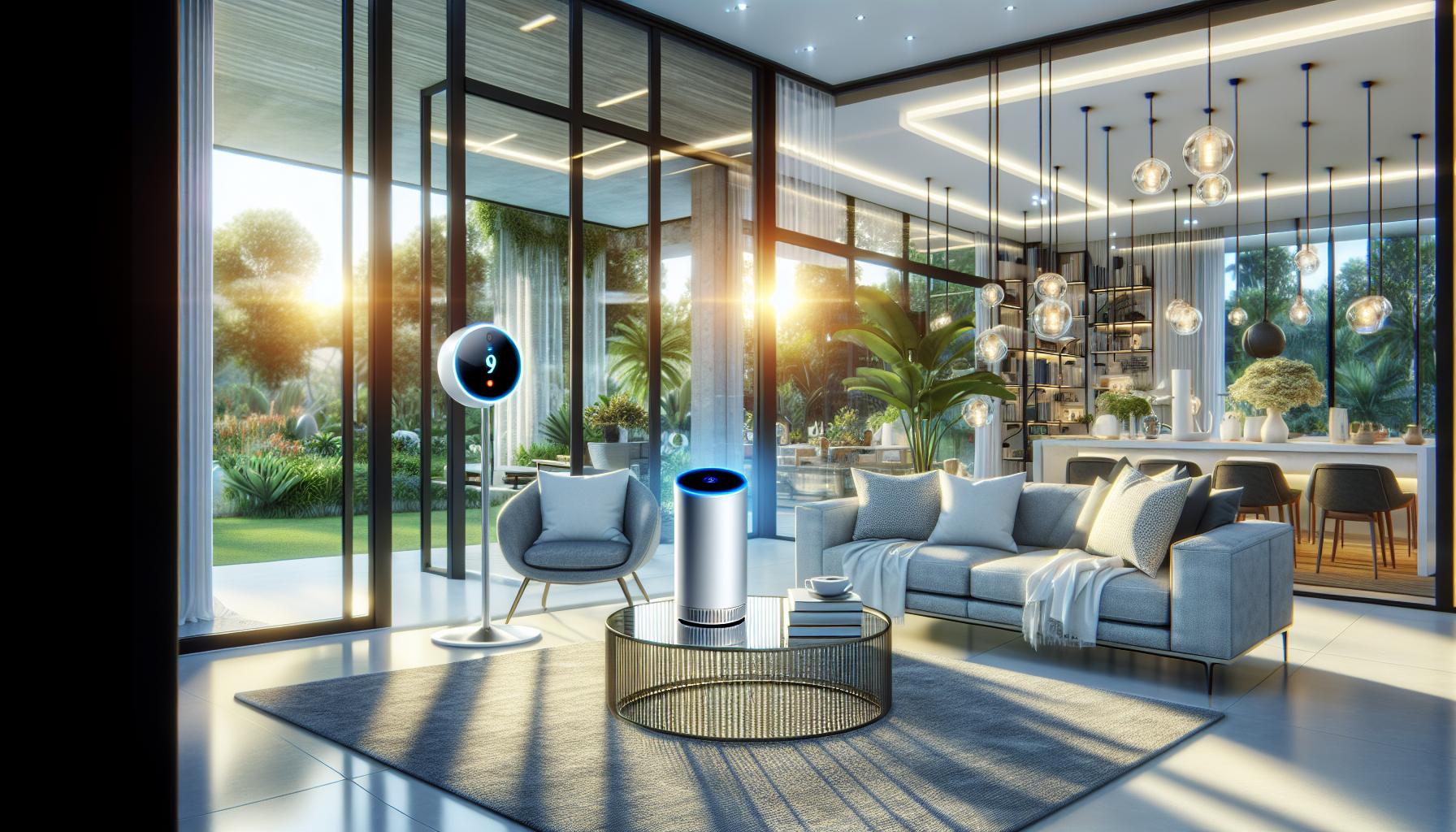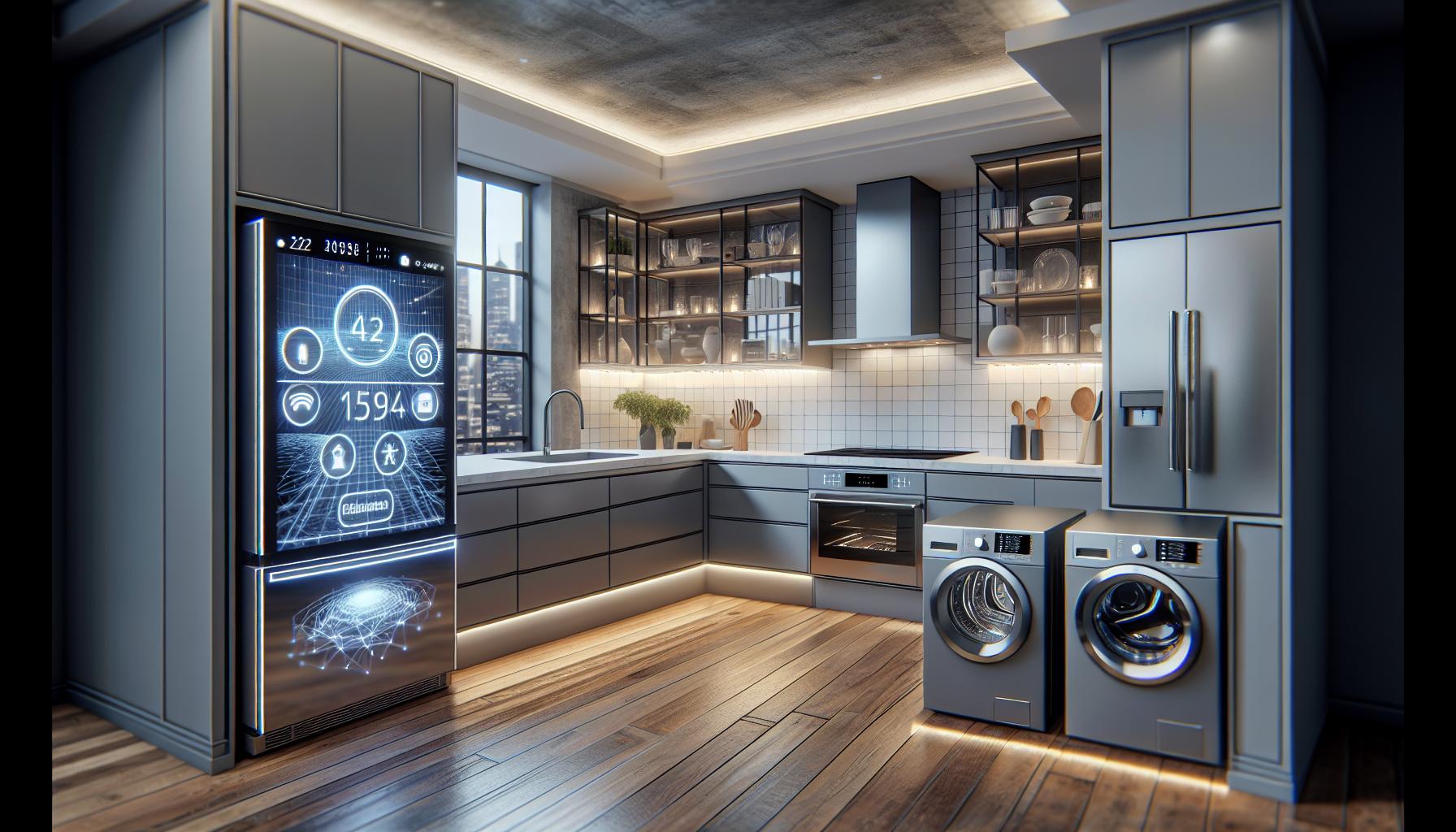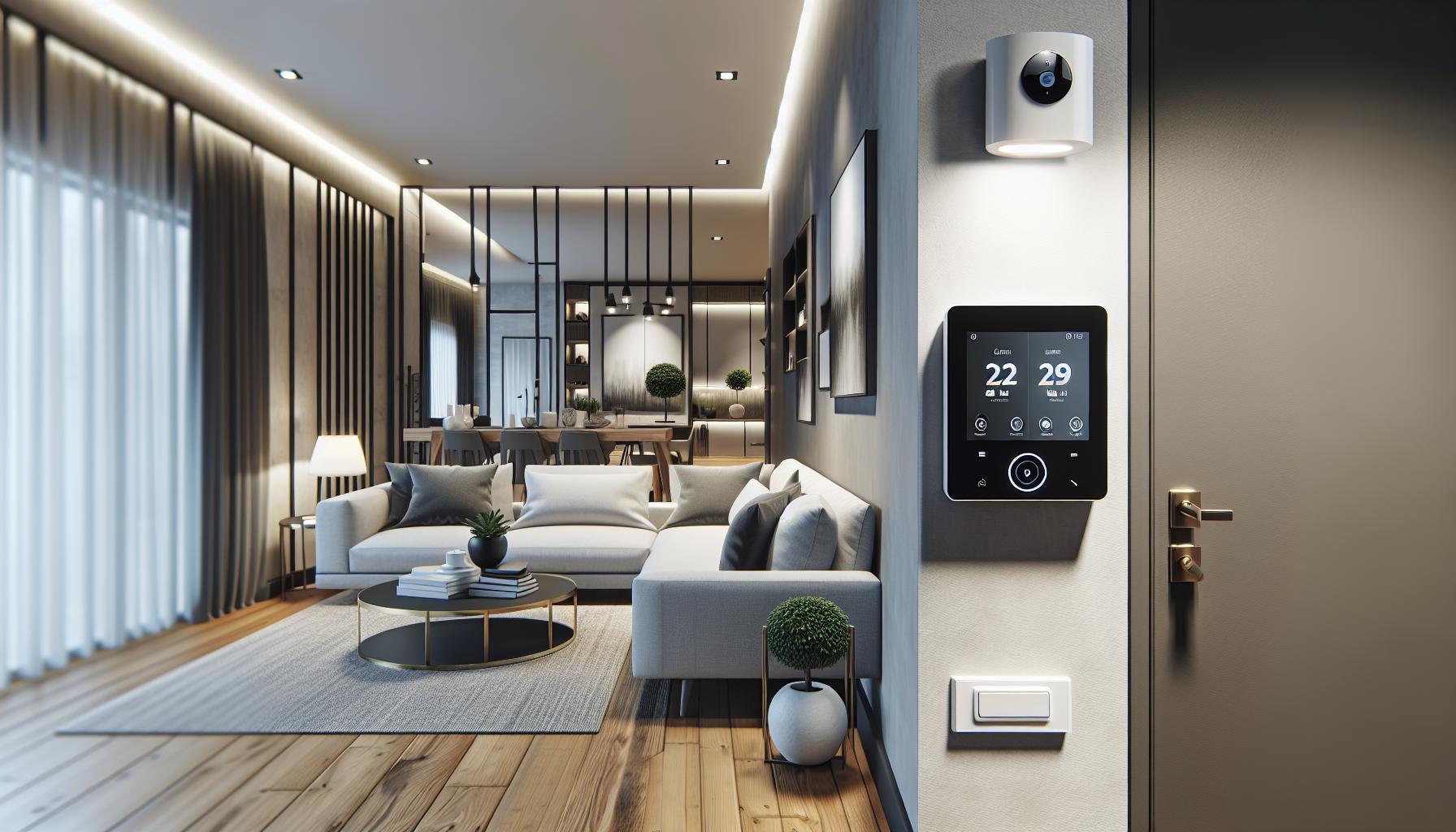Key Takeaways
- Enhanced Comfort and Efficiency: Smart home building ideas improve daily living by integrating automated lighting, climate control, and smart appliances, leading to increased comfort and convenience.
- Energy Savings: Incorporating smart technologies can result in an average energy savings of 10-15% annually, thanks to features like smart thermostats and automated lighting systems.
- Improved Security: Smart security systems, including cameras and motion sensors, provide real-time monitoring, enhancing home safety and allowing remote access for homeowners.
- Functional Home Automation: Central control hubs and scheduled automation simplify home management, allowing users to control various devices seamlessly from one interface.
- Innovative Solutions: Ideas like intelligent climate control and smart lighting systems adapt to user preferences, offering customizable settings that optimize energy usage and enhance ambiance.
- Strategic Planning and Budgeting: Successful implementation of smart home features involves careful planning of needs, budgeting for devices and installation, and considering long-term savings on energy costs.
In today’s rapidly advancing technological landscape, smart home building ideas are transforming the way people live. Integrating cutting-edge technology into home design isn’t just about convenience; it’s about enhancing comfort, security, and energy efficiency. As homeowners seek innovative solutions to elevate their living spaces, the possibilities are endless.
From automated lighting and climate control to advanced security systems, smart homes offer a seamless blend of functionality and style. These modern features not only simplify daily tasks but also contribute to a sustainable lifestyle. Exploring these smart building concepts can inspire anyone looking to create a home that adapts to their needs while embracing the future.
Smart Home Building Ideas
Smart home building ideas incorporate advanced technologies to create spaces that optimize comfort, security, and energy efficiency. These concepts leverage automation and connectivity to provide seamless control over various home systems. Individuals can enhance their living environments with features such as:
- Automated Lighting: Smart lighting systems adjust brightness and color temperatures based on occupancy and time of day, improving energy savings and ambiance.
- Climate Control: Smart thermostats learn user preferences and adjust heating and cooling automatically, leading to reduced energy consumption while maintaining comfort.
- Security Systems: Integrated security solutions include smart cameras, doorbell cameras, and motion sensors, providing real-time monitoring and alerts for enhanced safety.
- Smart Appliances: Kitchen and laundry appliances, like smart ovens and washing machines, optimize performance and offer remote monitoring and control via smartphone apps.
- Home Entertainment: Smart home entertainment systems allow for centralized control of audio and video devices, delivering customized viewing and listening experiences.
Exploring these innovative ideas encourages homeowners to create functional, sustainable living spaces that adapt to their evolving needs.
Benefits of Smart Homes

Smart homes offer numerous advantages that enhance daily living. These benefits include energy efficiency, enhanced security, and increased convenience.
Energy Efficiency
Smart homes significantly reduce energy consumption through automated systems that optimize usage. Smart thermostats adjust heating and cooling based on occupancy, resulting in an average energy savings of 10-15% annually. Automated lighting systems turn off lights when no one is present, and smart appliances operate during off-peak hours, further lowering energy bills. Integrating solar panels with smart technology can also maximize energy generation and reduce reliance on traditional power sources.
Enhanced Security
Smart home technology heightens security levels through real-time monitoring and control. Smart cameras provide live feeds, enabling homeowners to monitor their property remotely. Motion detectors and door/window sensors alert owners of unusual activity, increasing response times. Smart locks allow for keyless entry, which can be managed remotely, providing added safety against unauthorized access. Overall, these features create a more secure environment for families.
Increased Convenience
Smart homes simplify everyday tasks and enhance comfort. Voice-activated assistants control various devices, allowing for hands-free management of lighting, entertainment, and climate. Automated schedules for appliances streamline household chores, while smart irrigation systems optimize water usage in gardens. These conveniences significantly reduce time spent on mundane tasks, allowing homeowners to focus on activities they enjoy.
Essential Components of Smart Home Design

Smart home design relies on the integration of essential components that enhance functionality and user experience. These components streamline operations, improve energy efficiency, and enhance security.
Smart Devices and Appliances
Smart devices and appliances play a crucial role in modern smart homes. They include smart refrigerators, ovens, and washing machines that provide seamless communication and control. Features include:
- Smart Refrigerators: These appliances offer inventory tracking, temperate alerts, and integrated screens for meal planning.
- Smart Ovens: They allow remote cooking adjustments, recipe guides, and preheat scheduling via mobile apps.
- Smart Washing Machines: They provide cycle customization, energy usage reports, and notifications when cycles are complete.
Smart devices improve everyday tasks, fostering convenience and efficiency throughout the home.
Home Automation Systems
Home automation systems serve as the backbone of a smart home setup. These systems enable users to control devices from a central hub, enhancing ease of use. Key features include:
- Central Control Hubs: These hubs allow users to manage various smart devices from a single interface.
- Scheduled Automation: Users can automate tasks like turning lights on/off or adjusting thermostats according to daily routines.
- Remote Access: Homeowners can monitor and control systems through mobile applications, providing security and convenience.
Home automation systems streamline daily operations, creating a cohesive environment that adapts to individual needs.
Innovative Smart Home Building Ideas

Innovations in smart home technology create opportunities for enhanced living experiences. Below are some key ideas that homeowners can implement to elevate their spaces.
Smart Lighting Solutions
Smart lighting systems provide flexibility and energy efficiency. They can automatically adjust brightness based on natural light or occupancy levels. Homeowners can control lighting through smartphone apps or voice commands. Systems integrate with sensors to turn lights on or off when someone enters or leaves a room. Examples include Philips Hue and Lutron, which offer customizable settings and schedules.
Intelligent Climate Control
Intelligent climate control creates comfortable living environments while saving energy. Smart thermostats, like the Nest Learning Thermostat, adapt to individual preferences. They learn user habits and adjust temperatures accordingly. Homeowners can regulate climate settings remotely via apps. Additionally, smart HVAC systems monitor air quality and optimize energy usage to ensure efficient performance.
Advanced Home Security Systems
Advanced home security systems enhance safety and peace of mind. They include smart cameras, doorbell cameras, and motion detectors that provide real-time alerts to homeowners. Systems like Ring and Arlo allow remote monitoring and interaction with visitors. Keyless entry systems add convenience, eliminating the need for physical keys while enhancing access control. These comprehensive solutions create a secure environment without compromising accessibility.
Tips for Implementing Smart Home Features
Implementing smart home features requires strategic planning and sound budgeting. Homeowners can maximize efficiency and enjoyment through careful consideration of technology needs and financial resources.
Planning Your Smart Home
Planning a smart home involves identifying specific needs and preferences. Establish a comprehensive list of desired features, like smart lighting and climate control. Assess the layout and size of the home to determine the placement of devices, ensuring adequate coverage and connectivity. Research compatible ecosystems, such as Amazon Alexa or Google Assistant, which facilitate device integration. Prioritize security by including smart cameras and alarms in the plan. Engage a professional if necessary to ensure cohesive design and functionality.
Budgeting for Smart Technologies
Budgeting for smart technologies requires thorough consideration of initial costs and ongoing expenses. Estimate the total cost by researching prices for devices like smart thermostats, lighting systems, and security cameras. Include installation fees when applicable, as both DIY and professional installations can influence expenses. Factor in potential savings from energy efficiency, as many smart devices lead to lower utility bills over time. Allocate a portion of the budget for future upgrades, as technology continually evolves. Monitor ongoing costs for subscriptions to services associated with smart devices, such as cloud storage or advanced security features.
Smart Home Building Ideas
Embracing smart home building ideas transforms living spaces into efficient and secure environments. By integrating advanced technology homeowners can enjoy enhanced comfort and convenience while significantly reducing energy consumption. The ability to control lighting climate and security through smart devices not only simplifies daily tasks but also elevates the overall quality of life.
As individuals explore innovative features and practical implementation tips they’re empowered to create homes that reflect their unique needs. With careful planning and budgeting the journey toward a smarter home becomes both achievable and rewarding. Investing in smart technology today paves the way for a more sustainable and enjoyable living experience tomorrow.